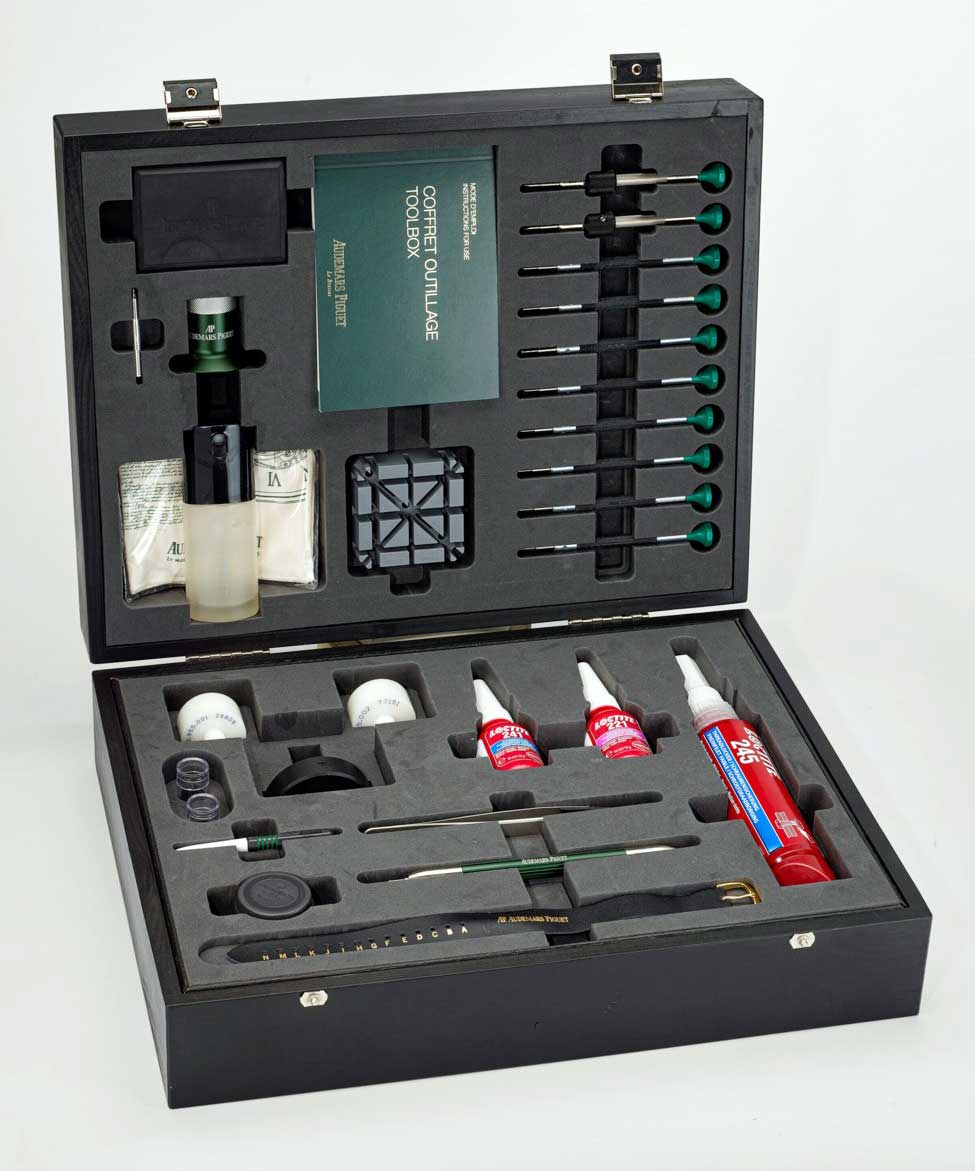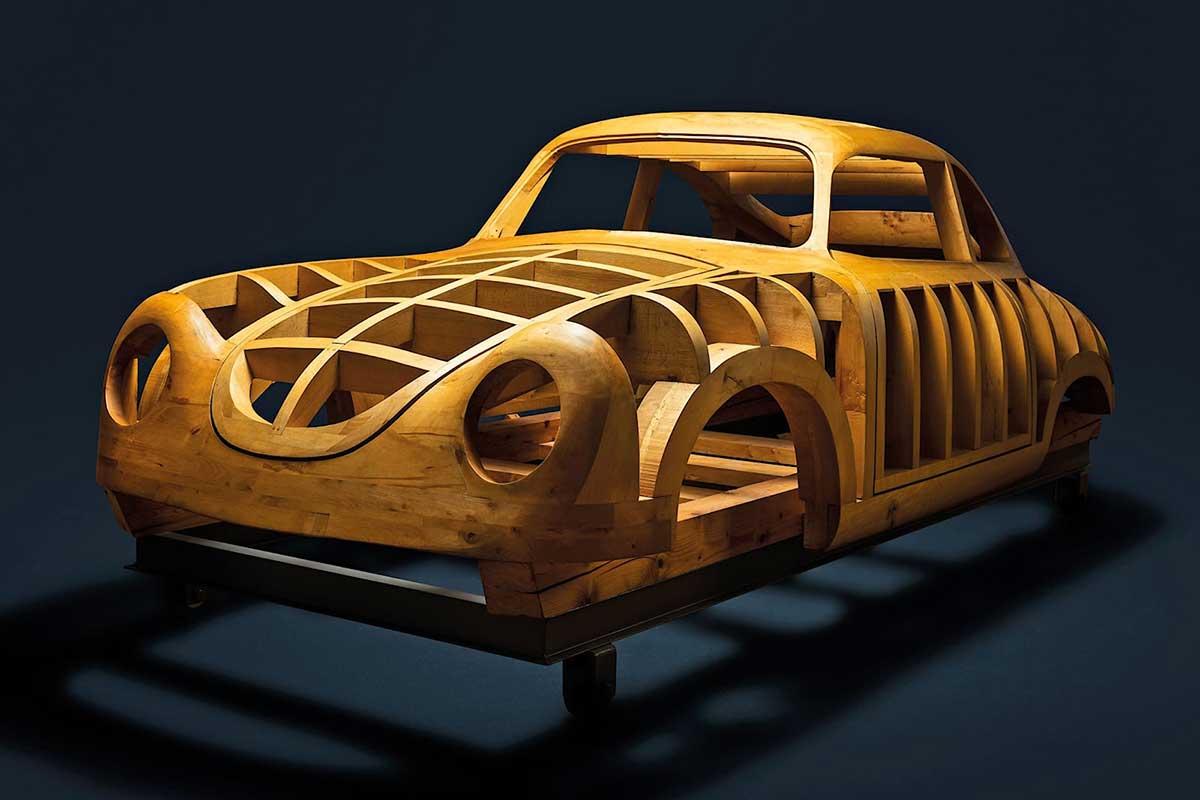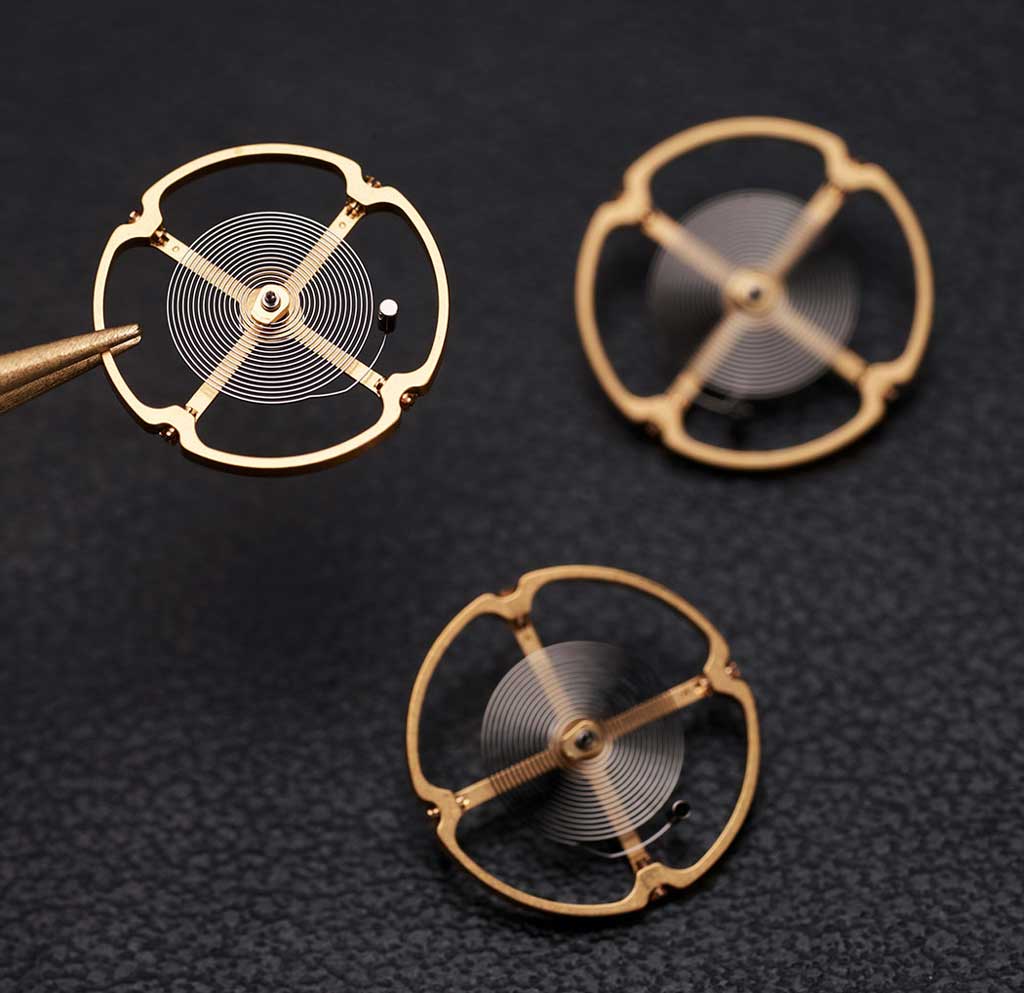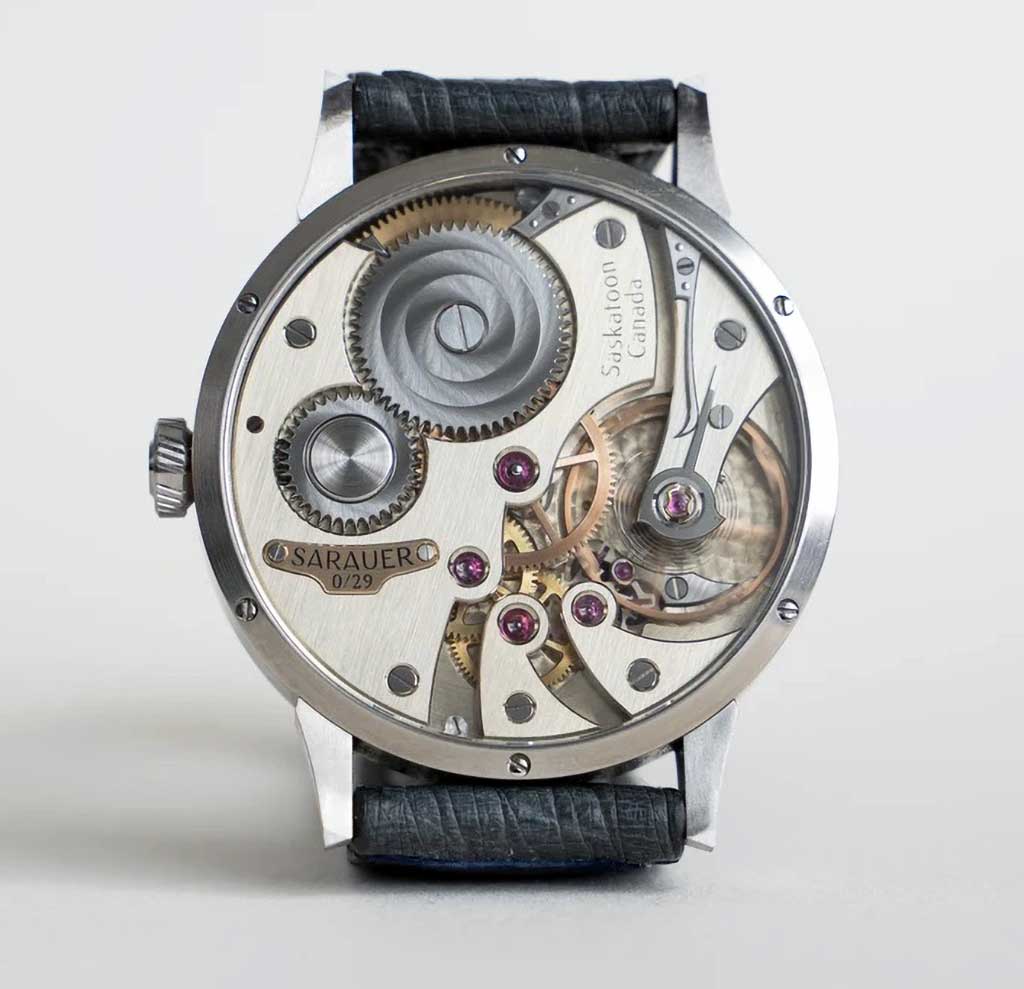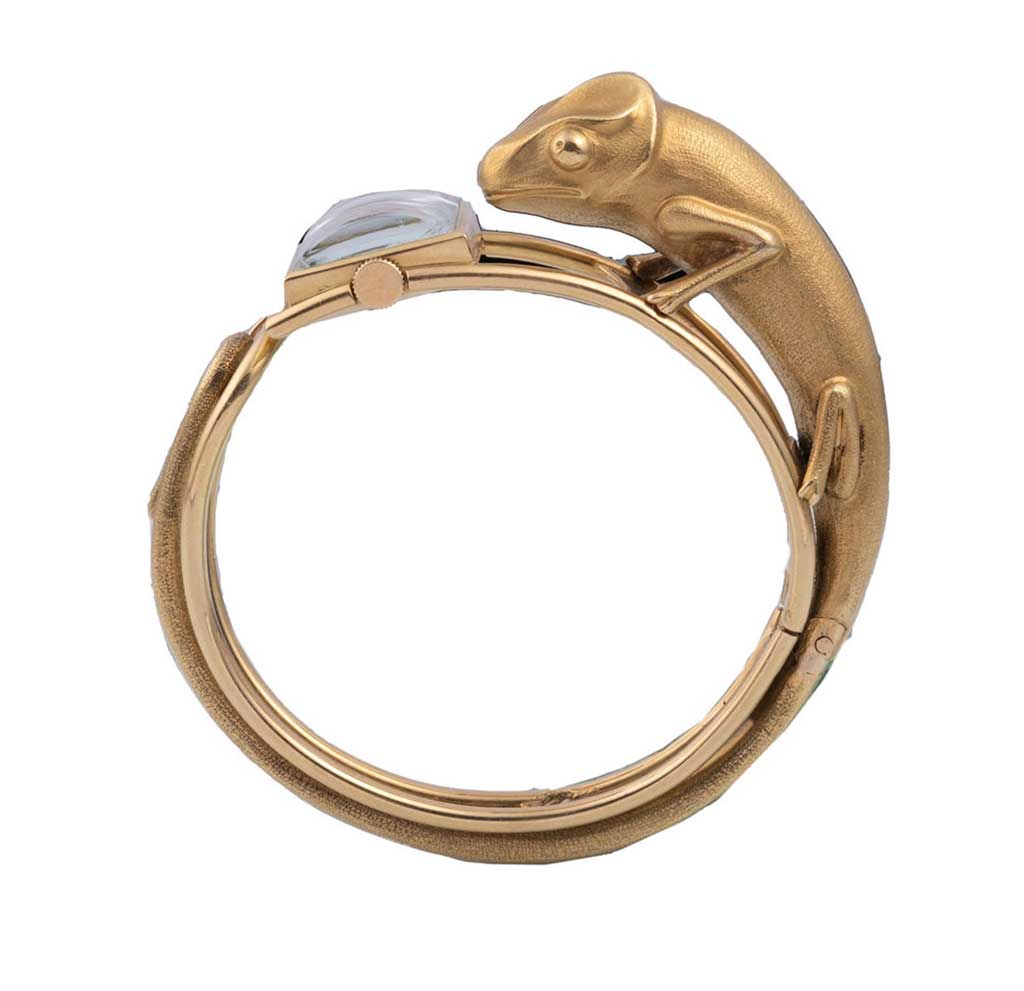
Chameleon Patek
This unusual Patek Philippe novelty, reference 1252, sold for well over 3x its high estimate earlier this week, closing at CHF310,000 (CHF387,500 with premiums). Produced circa 1949, it contains a humble, manually wound caliber and features a bracelet in the shape of a chameleon that sits proud on the wrist. As the auction house, Antiquorum, that sold it put it:
"probably one of the most decorative and unusual lady's Patek Philippe ever created"
Why settle for blending in when you can stand out?
The Innate Quality of F.P. Journe
25 watchmakers and seven artisans produce around 1,000 mechanical watches each year inside the well-equipped ateliers of F.P. Journe, where each component is designed, hand finished, and adroitly assembled into a ticking work of art.
Ming Liu reporting for the Financial Times:
In an age of slick marketing campaigns and commercial agendas, Journe’s genuine and singular commitment to his craft resonates with collectors, especially the watch purists who have been crucial to the brand’s continued independence.
The World’s Smallest Liquid “Clock”
Made using programmable liquid circuits and 70 microscopic valves.
Photographed using IBM Research’s open-source, LEGO microscope.

NOS Hamilton Khaki
Worn & Wound have unearthed 40 new-old-stock examples of the Hamilton Khaki Field.
Setting the large Khaki logotype emblazoned on the dial aside, I find the form of the hands and overall proportions of the watch to be simultaneously more harmonious and more utilitarian when compared side by side with its modern derivative.

Behind the Scenes at Sellita
Founded in 1950 by Pierre Grandjean and acquired by Miguel García in 2003, Sellita has grown to become the primary alternative to ETA's stable of workhorse movements following Nicholas G. Hayek's proclomation in 2002 that the Swatch Group would begin curtailing the supply of movements from ETA, which powered well over half of timepieces produced by the Swiss watch industry at the time.
In 2022, Sellita produced somewhere in the neighbourhood of 1,500,000 movements, with a staff of just 850 employees.
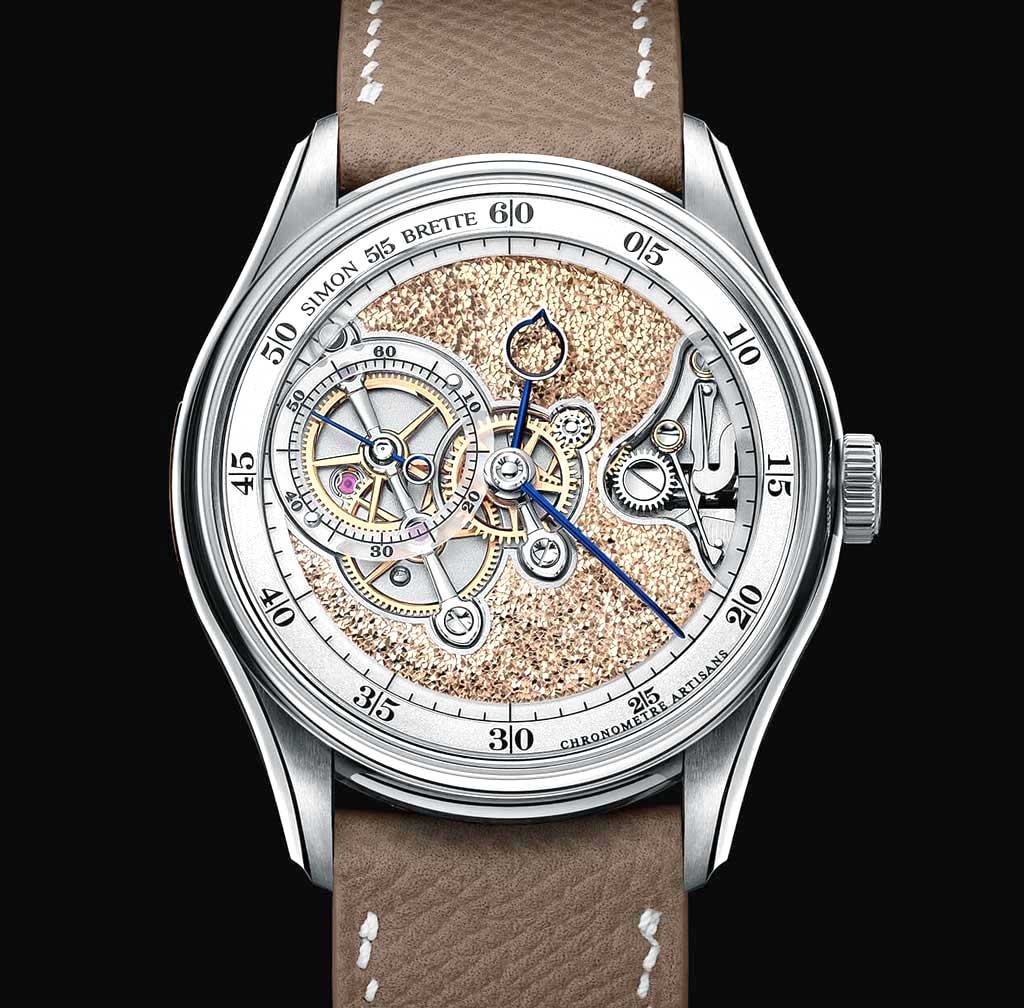
Artisans of the Chronomètre Artisans
Unlike at his prior place of employment, MB&F, Simon Brette has not listed the artisans responsible for the realization of his debut timepiece, the Chronomètre Artisans, on his website.
Courtesy of Joshua Munchow, here is a list of the companies and craftspeople bringing Brette's vision to life:
Matthieu Allègre - watch design
Yasmina Anti - hand engraving
Marc Bolis and Alyna Rouelle - micromechanical machining
Barbara Coyon - component decoration and finishing
Pierre-Alain Dornier & Cie - precision machining
Julien Ducommun & Cie - manufacturing, micromechanics and machining
Alexis Greco & Cie - component decoration and finishing
Luc Monnet - watchmaker prototypist
Anton Pettersson - watchmaker prototypist

Dovetail
The debut timepiece from Simon Brette features a dovetail, in rose gold, as an homage to his father's craft of carpentry. Although the dovetail itself isn't functional in this particular case, it does have me wondering how viable something like a clevis pin would be to aid in sealing a watch case in a manner similar to the way that boosters for rocket engines are hermetically sealed.
While the Chronomètre Artisans is not physically made by Brette himself, he has clearly made no shortage of use of the machining talent and the craftsmanship of the artisans he's worked with over the years through his efforts behind the scenes at MB&F and Chronode.
By all accounts, the initial run of 12 prototypes of the Chronomètre Artisans will be better made than most mechanical timepieces on the market today.

